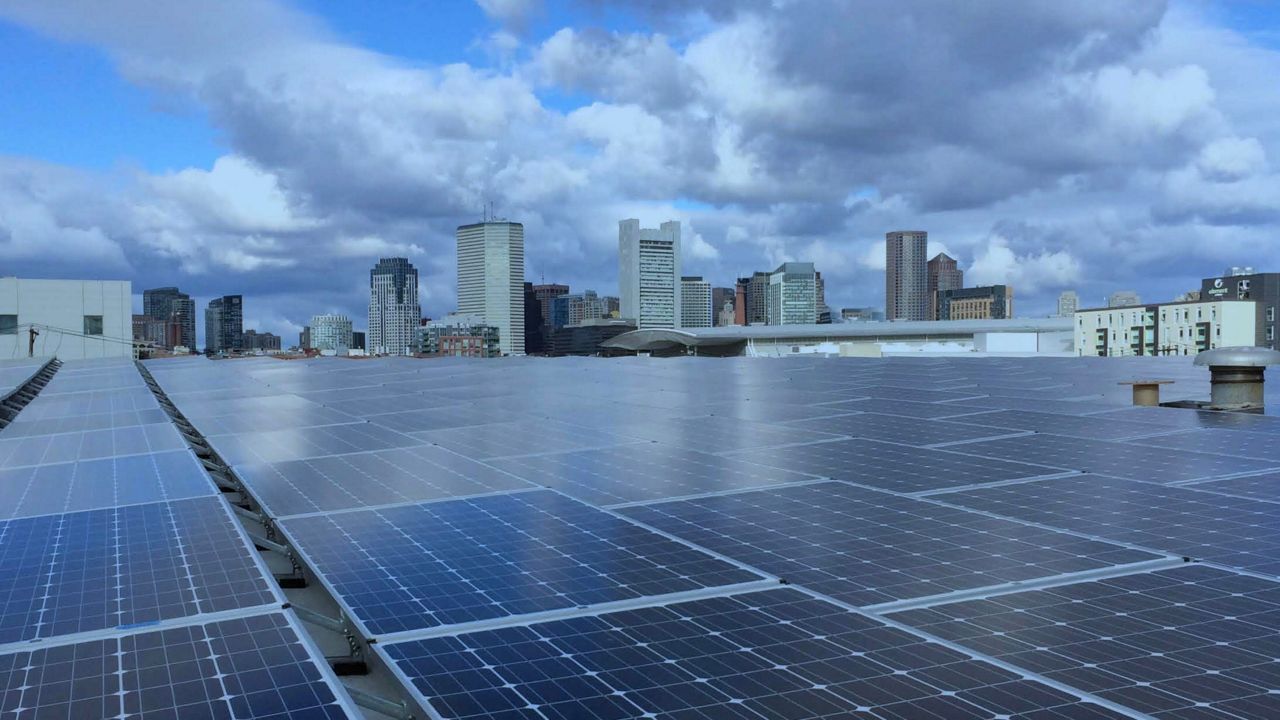Los Angeles is capitalizing on one of its greatest assets: the sun. LA ranks first in the nation for installed solar photovoltaic capacity, according to the nonprofit Environment California Research and Policy Center’s eighth annual Shining Cities report released Tuesday. San Diego ranks second, with San Jose, Sacramento, San Francisco and Riverside also placing in the top 20.
Los Angeles has led the nation among all surveyed cities for seven out of the eight reports. In 2017, San Diego briefly held the top spot. The Los Angeles Department of Water and Power ranks first in municipal utilities for solar power.
“The reason is just the sheer size of the city,” said Environment California State Director Laura Deehan. “It’s a big population center, and that adds up to an enormous amount of rooftop solar capacity.”
Local, state and federal policies have encouraged LA home and business owners to install rooftop photovoltaic panels to generate electricity. In 2006, California adopted a Million Solar Roofs Initiative to spur solar energy installations using rebates and a practice called net metering, which compensates solar owners for the electricity they add to the grid.
In recent years, the city of Los Angeles streamlined the solar permitting process with instant applications to speed up adoption. Now, a statewide version of instant solar permitting is making its way through the California legislature. The Solar Access Act, or SB 379, would implement instant, online solar permitting in California counties with more than 150,000 residents starting next year.
In 2020, California adopted a Solar Mandate that requires all newly built homes to install photovoltaic power systems. While California no longer offers a tax credit for solar, there is a federal tax credit worth 26% of an installed system’s value.
The United States generates enough solar energy to power more than 23 million homes, the report found, with major cities leading rooftop solar adoption. Per capita, Honolulu has the most solar in the Pacific, Las Vegas leads in the mountain region, Indianapolis in the North Central U.S., San Antonio in the South Central U.S. and Newark, N.J., in the Northeast.
Per capita, Fresno has the most installed solar capacity in California, the report found. Bakersfield ranks second.
A nonprofit dedicated to protecting California’s air, water and open spaces, the Environment California Research and Policy Center used data from municipal and investor-owned utilities, city and state government agencies, operators of regional electric grids and nonprofits to compare cities.
The latest Shining Studies analysis comes two weeks after the California Independent System Operator set a record for renewables, briefly providing 97.6% of the state’s grid electricity on April 3. Solar generates about 20% of California’s power, according to the nonprofit California ISO, which manages the state’s electricity flow.
California increased its utility-scale solar capacity 9% last year, according to the American Clean Power Assn., and it continues to add capacity as it strives to meet a target of 100% carbon-free energy by 2045.










